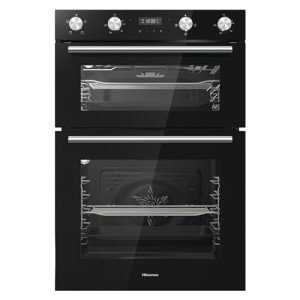The Future of Culinary Convenience: Integrated Ovens and Hobs
In the ever-evolving world of kitchen area design, integrated ovens and hobs are at the forefront of modern-day culinary innovation. These devices not just promise aesthetic appeal but likewise boost functionality and performance, transforming how we prepare our meals. As integrated oven Ovens And Hobs seek to create smooth, stylish, and user-friendly cooking spaces, the integration of ovens and hobs provides an ideal solution. This post explores what integrated ovens and hobs are, their advantages, and key considerations for those wanting to update their kitchen area.
What Are Integrated Ovens and Hobs?
Integrated ovens and hobs are kitchen appliances perfectly built into the cabinetry or counters, rather than standing apart as separate entities. Integrated ovens are developed to mix into cooking area systems, providing a flush surface with surrounding cabinetry. Likewise, integrated hobs are mounted directly into the counter top, producing a streamlined appearance. This minimalist design method not only raises the aesthetic appeal of the kitchen however likewise makes the most of offered area.
Types of Integrated Ovens
Single Ovens: These standalone systems are designed for simplicity and ease of use, featuring a single cooking chamber and numerous cooking modes such as baking, barbecuing, and roasting.
Double Ovens: Ideal for larger families or passionate cooks, double ovens supply two independent cooking compartments, enabling numerous meals to be prepared all at once at various temperature levels.
Mix Ovens: Blending conventional baking and steam cooking, mix ovens provide adaptability for different cooking requirements, retaining moisture while guaranteeing completely cooked meals.
Types of Integrated Hobs
Gas Hobs: These hobs enable for precise temperature level control and immediate heat, making them a favorite among professional chefs and cooking enthusiasts.
Induction Hobs: Known for their effectiveness and security, induction hobs use electromagnetic energy to heat pots and pans straight. They are quick to heat and cool down quickly, reducing the risk of burns.
Electric Hobs: Featuring smooth ceramic or glass surfaces, electric hobs are easy to clean and provide an even heat circulation for a range of cooking designs.
Benefits of Integrated Ovens and Hobs
1. Space Optimization
With the trend of smaller sized home and open-concept homes, integrated appliances help optimize kitchen area. By fitting seamlessly into cabinetry, kitchen areas can appear larger and more open, lessening mess and enhancing visual appeal.
2. Visual Appeal
Integrated ovens and hobs provide a smooth, modern look that fits well within various style styles. The ability to customize cabinets makes sure that property owners can accomplish a cohesive appearance that matches their style, whether modern, standard, or something in between.
3. Improved Functionality

Integrated devices frequently feature advanced features such as smart technology, self-cleaning alternatives, and different cooking modes. These improvements not only simplify the cooking procedure however likewise boost functionality, making cooking a pleasurable experience.
4. Safety Features
Integrated hobs, particularly induction designs, are thought about more secure than traditional cooking surfaces. They cool down quickly, lowering the threat of burns, and typically include functions like child locks and automatic shut-off for extra safety.
Key Considerations When Choosing Integrated Ovens and Hobs
1. Area and Layout
Before buying integrated devices, consider the space offered in your kitchen area. Step the kitchen cabinetry and counter tops carefully to guarantee an ideal fit, permitting sufficient ventilation and setup space.
2. Cooking Needs
Assess your cooking habits and choices. If you often entertain or cook big meals, a double oven may be the very best option. Conversely, if you're an occasional chef, a single oven might be sufficient. Likewise, selecting in between gas, electric, or induction hobs will depend on your cooking design and convenience level.
3. Energy Efficiency
With rising energy expenses and growing ecological issues, choosing energy-efficient home appliances can save cash in the long run. Look for items with high energy ratings and features like programmable timers and eco-modes.
4. Quality and Brand
Investing in premium devices from trustworthy brands makes sure sturdiness and efficiency. Reading customer reviews and looking for suggestions can assist limit the finest choices tailored to your requirements.
Conclusion
Integrated ovens and hobs are more than simply cooking area appliances; they represent a shift towards a more practical, stylish, and effective method to cooking. As house owners prioritize seamless style, benefit, and advanced features, these integrated services will unquestionably shape the kitchen areas of tomorrow. Whether remodeling a cooking area or developing a new one from scratch, incorporating ovens and hobs is an investment that promises to improve both cooking experiences and the overall visual of the home.
